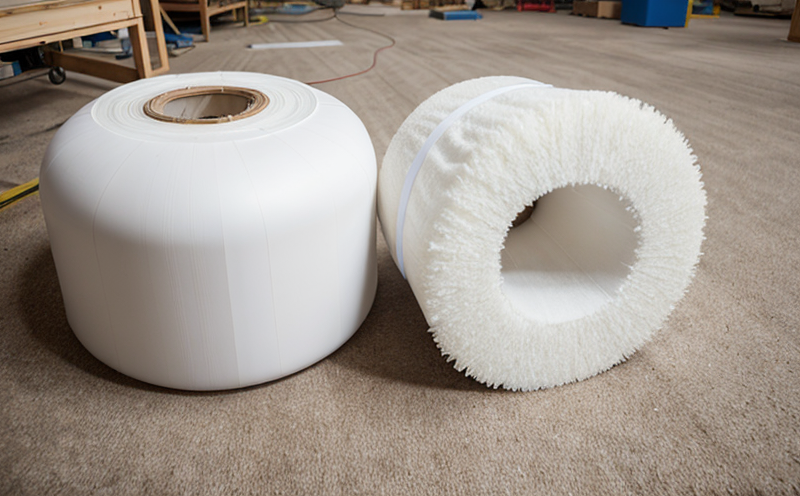ISO 717-1 Weighted Sound Reduction Index Testing
The ISO 717 series of standards provides a comprehensive framework for acoustic testing, particularly focusing on the evaluation of sound insulation performance in building constructions. The specific test we are discussing here is ISO 717-1: "Sound insulation in buildings — Determination of the weighted sound reduction index Rw and other quantities," which measures the ability of materials to reduce noise transmission through walls, floors, or partitions.
The Weighted Sound Reduction Index (Rw) quantifies the effectiveness of a partition material in reducing airborne sound. This test is crucial for ensuring that building constructions meet stringent acoustic performance requirements as outlined by various national and international codes such as AS1429, EN ISO 717-1, ASTM E586, and IEC 60118.
In practice, this test involves placing a specimen between two rooms separated by an air gap. Sound sources are placed in the source room to generate noise, which is then transmitted through the partition into the receiver room. The sound levels on both sides of the partition are measured and compared using specific procedures outlined in ISO 717-1.
The test setup includes a calibrated sound source, measurement microphones, and sound level meters. Specimens must be prepared carefully to ensure they represent realistic installation conditions. This may involve fixing the specimen to a frame or supporting it between two parallel planes with appropriate gap sizes as specified in the standard.
Once the test is conducted, the weighted sound reduction index Rw is calculated using the formula provided in ISO 717-1, which considers the average of several frequency bands. The result indicates how well the material performs across a wide range of frequencies and provides designers with critical information about their partition's acoustic properties.
Understanding the limitations of different materials is essential for accurate testing. For instance, certain materials may perform well in low-frequency ranges but poorly at higher frequencies. Conversely, materials that excel in high-frequency noise reduction might not be as effective against lower frequency sounds. Therefore, it’s important to select appropriate test specimens and ensure they are representative of the final installation.
Compliance with ISO 717-1 is essential for ensuring that building constructions meet international standards for acoustic performance. This can significantly enhance the comfort and quality of life for occupants by reducing noise pollution in residential, commercial, and industrial environments. The test also helps manufacturers improve product quality by identifying areas where materials could be optimized for better sound insulation.
Applied Standards
- ISO 717-1:2016 – Sound insulation in buildings – Determination of the weighted sound reduction index Rw and other quantities
- AS1429:2008 – Building construction – Requirements for acoustic design and construction
- EN ISO 717-1:2015 – Sound insulation in buildings – Determination of the weighted sound reduction index Rw and other quantities
- ASTM E586-14 – Standard test method for determining the sound transmission loss of building materials using a two-room free-field technique
Why Choose This Test
- This test provides accurate and reliable data on the acoustic performance of partition materials.
- It helps ensure compliance with international standards, enhancing product quality and reputation.
- The results can be used to optimize material selection for better sound insulation.
- The test supports sustainable building design by improving indoor acoustics.
Environmental and Sustainability Contributions
- The accurate testing of partition materials ensures that buildings meet strict acoustic performance criteria, contributing to a healthier living environment.
- Better sound insulation can lead to reduced energy consumption for air conditioning systems by minimizing heat transfer through walls.
- Improved acoustics in public spaces can enhance user satisfaction and reduce noise pollution, promoting sustainable urban development.





